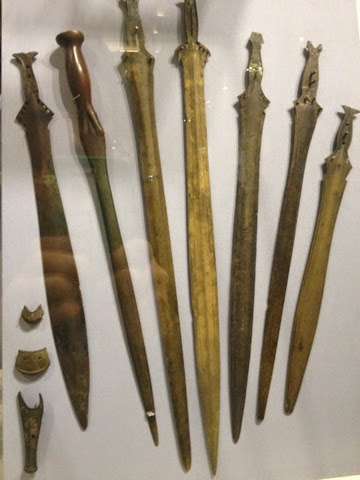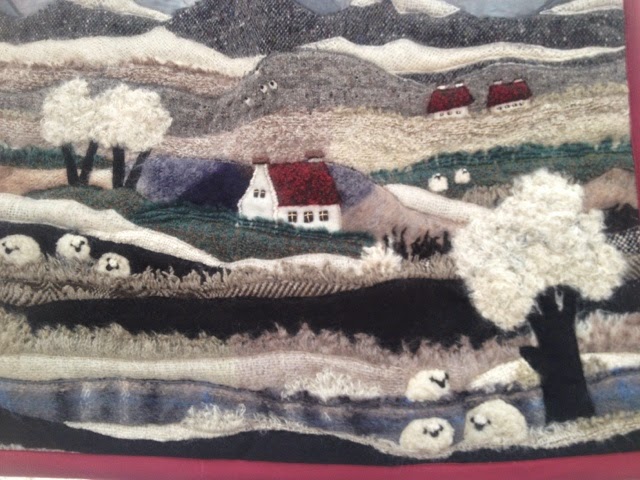One of the best parts of being a sheep shearer is being able to visit so many farms and seeing how people manage their sheep. Every farm is different in their operation. Different barns, different handling systems, different breeds of sheep and different management techniques. While each farmer is entitled to their own opinions on how to raise and manage their animals throughout the year, shearing day represents one of the few times when you are at the mercy of another person and their potentially conflicting opinions on how to manage your sheep. Shearers will tell you how much time to leave sheep off feed (my answer? At least 12 hours, enough time for most of their last meal to pass through their bodies and not end up smooshed into their wool and the shearing floor), how dry the sheep need to be, how confined they want them and most importantly, how they want them grouped up so they can be caught for shearing. Their are many times when a farmer feels unsure about a shearers instructions, they worry that the sheep will get too hungry, will be crushed if packed in too tight etc... Let me be the first to say that the shearer isn't necessarily always right but many times I have found that if people trust their shearers gut instincts they are usually pleasantly surprised how much easier a typically difficult job becomes.
This takes us to the topic of handling systems. This is an area of shearing that is grossly under evaluated. I am hoping to shine more light on this topic and help more people make educated decisions about handling equipment, hopefully to make their lives and their shearers lives better. The most common type of handling system I see as a sheep shearer is an oldie but goodie...the horse stall. You run your sheep into it and depending on your shearer and the amount of sheep you have, the shearer can setup in the stall with the sheep or outside on the stall door. This is a surprisingly easy setup. The sheep are grouped into an area that doesn't give them a huge amount of room to run which keeps everyone safe. The shearer or owner doesn't have to move the sheep very far to do the job, plus horse barns tend to be pretty clean so contamination to wool is limited. Horse stalls are also great at keeping sheep dry...another huge plus. Only a few words of advice for those of you operating out of horse stalls. Put your sheep in as few stalls as possible! I find the most frustrating part of horse stalls are the folks who won't put more then 3-4 sheep per stall. If you have sheep in more then 3 stalls then you have lost the advantage of nearness to your shearing spot plus the sheep tend to have too much freedom in the stall which results in the sheep running around more and general chaos. You can easily put ten sheep in a horse stall. If your concerned about them being to squished wait till about ten minutes before the shearer arrives to move them together. That's a lot of saved effort for everyone by avoiding dragging the sheep the extra distance and chasing sheep with a lot of extra space, around a horse stall. Sheep get hurt more often as a result of slamming into a wall or door because of too much space in a catching area then they do as a result of being pushed up together.
Another common shearing setup I see out on the road is the sheep chute. Commonly marketed by sydell and other equipment manufacturers under the name corral or handling system. People who own these things are extremely proud of having what is regarded as top of the line sheep handling systems. These are very expensive and in my opinion, completely useless to the East Coast farmer. For sheep to move in a chute properly, you need to run your sheep through it on a regular basis. If sheep only see their chute once a year at shearing time, they are going to put on the breaks and flatly refuse to pass through this contraption. You will end up manually pushing each and every sheep through the chute. The worse part of these systems is the opening where the sheep comes out. Many times its a sliding door which is slow to close and requires the sheep to walk out under a bar on their own accord. Sheep do not want to come out of the chute if someone is waiting for them on the other side. This will mean you will need two people to extract each and every sheep from the chute. One to push and one to pull. The sheep will inevitably come shooting out of the chute at a high rate of speed, plowing over the person in front and if your sheep have any weight to them, woe to be that guy. Chutes are a pain. Don't expect your shearer to catch from a chute. Their might be shearers out their who do not mind shearing out of chutes but I have never worked from a chute system where I didn't get hurt or just worn myself out pulling sheep out of them all day. Save yourself a lot of money and don't get chutes for shearing.
Another common type of shearing setup is the run in shed. Run in sheds are fabulous throughout the year at providing a minimal amount of shelter to sheep at low cost. Sheep only need minimal protection from the elements during most of the year and the open design of these sheds discourages sheep from spending all day in them and minimizes lung ailments. Run in sheds are great to shear out of...if you are prepared. The biggest problem I have with run in sheds are that they are typically situated in the middle of a field with no fencing around it so it is nearly impossible to trap a distrustful sheep in them. They frequently are not designed with gates or even a panel set up to keep the sheep in. Most people end up tying whatever discarded appliances, leftover fencing, old pool ladders, downed tree limbs, old tires etc...across the front to act as a gate (I have seen all those examples used as fencing to confine sheep). Do yourself a huge favor and get a proper gate for your run in shed. Their are many instances where you will need to confine your sheep and having a proper and safe gate will save you many frustrating hours chasing sheep around. Also if you are one of the folks with a run in shed plopped int the center of a field with no fencing on any side of the shed, purchase some panels to serve as a temporary corral to help in catching your sheep. This also will save you a lot of time and stress medication. Panels are useful for so many things so they are never a wasted purchase. The only other problem with run in sheds is their lack of electric. Be aware that running 4 extension cords together is an option but not the best option. If it rains that option turns dangerous quickly. Make sure you have thought out the best means of getting electric to the sheep, wether that is through a generator or electric cords, or even better, run electric out to your shed.
A final word of advice is for those of you looking ahead and for anyone even thinking about purchasing sheep handling equipment, here is what I would recommend you buy. (Just a quick preface that I am not being paid to push this product and haven't been encouraged by said company to promote them.) I would encourage everyone to take a look at the D & S Livestock Shearing Station, listed under the Work Stations link of their website (http://www.dslivestock.biz/workstations.html) This pen was designed by my husband and is what we use daily to shear large flocks of sheep in Iowa and surrounding states year round. It has been tested and stands up to substantial abuse. The fact that it is galvanized is an added bonus as you can be sure to have a product that lasts a long time without rusting out. This shearing pen is not only extremely useful for shearing but the spring loaded door feature also makes this a fabulous pen to work out of when doing other sheep husbandry tasks such as foot trimming , worming and treating sick sheep. The door is on a spring loaded hinge and will swing back in place on its own which saves you having to scramble to close the door behind you to keep sheep in. It's tall enough to hang a large shearing motor off of or if your shearer shears with handheld clippers it still safely confines your sheep in close quarters making them easy to catch and move to your shearing board. This pen also has side panels with fully enclosed lower half which makes the pen safe for feet and legs and also potentially double as a lambing jug or quarantine pen for sick animals. This pen is modular with the gate feature able to go on any side and breaks down easy to move it out of the way or store it when not in use. It holds roughly 7-8 sheep at a time (depending on how big your sheep are and how tight you pack them in) and has a gate panel at the back that can be tied into an existing chute to push sheep into the pen. The nicest thing about this pen is that it's flexible. It can be a stand alone system for those of you with one or two sheep or tie into an existing working station to make it easier to catch and maneuver the sheep. One last thing I want to point out is the grating that makes up the floor of this pen. If you are a stickler for clean wool then this is a necessity! The holes in the floor allow feces and urine to fall under and keeps the sheep clean by lifting them above the mess. These floors eliminate the need for bedding to be under the sheep and are a simple fix to a common problem. If you have fairly clean sheep or are less picky about your wool these are unnecessary but then again having floor grating can come in handy at times.
SH01 |
Total price with
|
This pen set up is not necessary to owning sheep. But if you keep in mind the functions of this pen and try to cobble together your own set up with these aspects in mind then you should succeed in making your shearing day a bit less stressful on everyone.
This article was written by Emily Chamelin. She is a full time sheep shearer operating in the Mid Atlantic region. Please feel free to send any questions for future articles to aeriedairy@yahoo.com.








































































